New products at Crocus
by Sarah - July 22nd, 2009.Filed under: Crocus, New Products.
New products today at Crocus
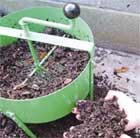
rotary-soil-sieve £39.99
A superb sieve that's made from steel and is easy to use. With this little machine you can sieve garden soil to remove stones and large clods so as to create a fine tilth for your plants. You can also use it to sieve garden compost and larger debris can then be thrown back on the compost heap to decompose more.Weight: 5kgDiameter: 32cmDepth: 39.5cmmesh size: 2.5cm x 1.5cmMade from steelGreat for sifting soil and separating weedsWorks well with bonfire ash and well rotted manureCan sit in a wheelbarrow
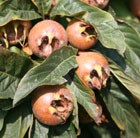
medlar £34.99
Position: full sun or light shadeSoil: fertile, moist but well drainedRate of growth: averageFlowering period: April to MayFlower colour: white, sometimes flushed pinkOther features: delicious fruits in late autumn and early winterHardiness: fully hardyA spreading, small tree with dark green leaves that turn shades of yellow and brown in autumn. In late spring white, bowl-shaped flowers (often with a flush of pink) clothe the branches and these are followed by russet brown, edible fruits that around the size of a small apple. These are ready to harvest after the first frosts, and after picking should be left to ripen for several weeks until the flesh has turned brown, soft and sweet and can be scooped out with a spoon.Garden care: When planting incorporate lots of well-rotted garden compost in the planting hole and stake firmly.
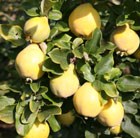
qunice £34.99
Position: full sunSoil: fertile, moist but well drainedRate of growth: averageFlowering period: April to MayFlower colour: pale pink to whiteOther features: quinces were once used as room freshenersHardiness: fully hardyNative to rocky slopes in Southwestern Asia, quinces are attractive small, rounded trees with knarled and slightly contorted branches. The stems are clothed in shallow bowl-shaped, pale pink to white flowers in late spring, and these are followed by very fragrant pale green, pear-like fruits. These ripen in autumn to a golden yellow, and grow up to 8cm long. They are too bitter and hard to eat fresh, but when cooked the flesh softens and turns pink and makes a delicious jam. It is a very hardy plant, but it needs warmth and sun to fruit well, so in colder climates it is best trained against a south facing wall. It works well in oriental style gardens and it has received the Award of Merit from the Royal Horticultural Society.Garden care: When planting incorporate lots of well-rotted garden compost in the planting hole and stake firmly.
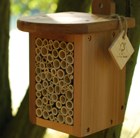
original-insect-house £24.99
This solid insect habitat provides space for many beneficial insects, including solitary bees (helping pollination and fruit yields) and is a well insulated over wintering space for ladybirds, lacewings etc (natural predators of Aphids in the season). Site in a sheltered spot near scented plants or a pond, preferably to catch the morning sun.Dimensions:H 220mm x W 135mm x D 135mm – Approx Weight: 2.5kg
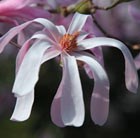
magnolia £14.99
Position: full sun or partial shadeSoil: any moist, well-drained soil, including chalkRate of growth: fast-growingFlowering period: AprilHardiness: fully hardyA beautiful, rounded, small tree or large shrub which flowers on bare branches. In mid spring, it is smothered in rose pink, star-shaped flowers with long, narrow petals that emerge from darker pink buds. The leaves are mid green and the tree is deciduous. An elegant choice for a small garden. It can also tolerate chalky soils. Garden care: Requires minimal pruning. Remove any broken, diseased or crossing branches after flowering. The best time to plant is in April, adding plenty of peat to the planting hole, in a sheltered spot. Mulch in spring with manure and leafmould, especially on dry soils.
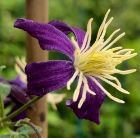
clematis (group 3) £9.99
Position: full sun or partial shadeSoil: fertile, well-drained soilRate of growth: fast-growingFlowering period: July – SeptFlower colour: rich purple flowers with pale yellow anthersOther features: easy to grow through shrubs and trees as the plant is pruned back each spring and so never becomes too much of a burden on the supporting plantHardiness: fully hardyRich purple star-shaped flowers with pale yellow anthers cover the plant from summer through to autumn. It looks great scrabbling through a tree or neighbouring shrub and in full sun the flowers have a stronger fragrance. Make sure that roots of the plant are in shade.Garden care: Cut back stems to a pair of strong buds 15-20cm (6-8in) above ground level before growth begins in early spring. Mulch in late winter with garden compost or well-rotted manure but avoid the immediate crown.

Honey Bush £9.99
Position: full sunSoil: moderately fertile, moist but well-drained soilRate of growth: average to fast-growing Flowering period: May to JulyHardiness: half hardyAs they unfurl in early spring, the spectacular, grey-green leaves up to 50cm (20in) long, reveal serrated edges that look as though they have been cut with pinking shears. This dramatic architectural shrub makes a stunning specimen for a sunny, perennial border or exotic-style garden in warmer areas of the country. In hot summers, it sends up curious tubular, reddish-brown flowers, but it is the wonderful foliage that stops you in your tracks. To stop it getting leggy, it is best cut back in early spring and the plant will make up to 1.5m growth in one season. To minimise the risk of frost-damage it's important to provide a dry, winter mulch. It is quite late into leaf in spring, so you do need to be patient, but you may be surprised by the amount of growth it will put on late in the year.Garden care: Water frequently until established and apply a generous mulch of well-rotted manure or garden compost around the base of the plant in spring. Although it is is shrub, this plant is best treated as a perennial and cut down to within two or three buds from the base of in early spring. It will shoot back from the base. Protect with a dry winter mulch of straw or bracken especially in cold winters.
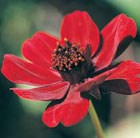
chocolate cosmos £5.99
Position: full sunSoil: moderately fertile, moist, well-drained soilRate of growth: average Flowering period: June to SeptemberHardiness: half hardyThese velvety, dahlia-like, chocolate-maroon flowers have a delicious aroma, reminiscent of the best Belgian chocolates. One of our recommended plants, they're particularly suitable for a sunny, exotic garden or a planting scheme based on 'hot' colours.Garden care: In autumn after the foliage has died back, reducereduce the stems to within 5cm (2in) of the roots. Lay in a tray of soil or compost and over-winter in a frost-free environment until early spring.
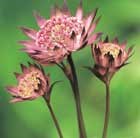
masterwort £5.99
Position: full sun or partial shadeSoil: fertile, moist, preferably humus-rich soilRate of growth: average to fast-growingFlowering period: June to AugustHardiness: fully hardyPapery, pinkish-magenta, pincushion-like flowers surrounded by a ruff of wine-tinted bracts are produced from June to August above deeply lobed, dark green leaves. Although it is an old cottage-garden favourite, this astrantia works equally well in contemporary-style plantings. Use towards the front of a sunny,yet moist border. Astrantias have been cultivated in Britain since the 16th century and have numerous common names, such as melancholy gentleman, Hatties pincushion and the more well known masterwort.Garden care: Astrantias do not like dry soil. Incorporate plenty of organic matter when planting and water well in dry weather especially newly established plants. Lift and divide large clumps in early spring and apply a generous 5-7 cm mulch of well-rotted manure or garden compost around the plant. Divided specimens may take some time to establish since they do not like having their roots disturbed.






